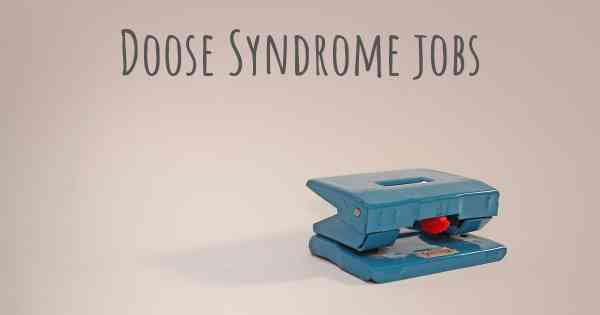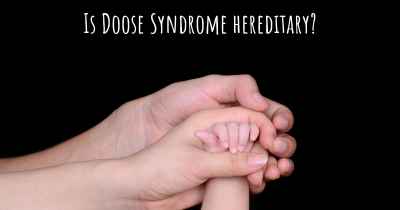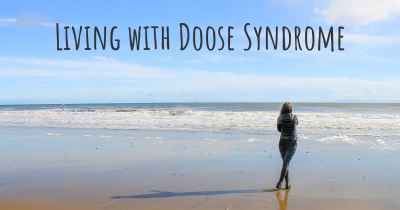Can people with Doose Syndrome work? What kind of work can they perform?
See how people with experience in Doose Syndrome give their opinion about whether people with Doose Syndrome can work and what kind of jobs are more appropriated for people with Doose Syndrome

Can people with Doose Syndrome work?
Doose Syndrome, also known as Myoclonic-Astatic Epilepsy (MAE), is a rare form of epilepsy that typically begins in early childhood. It is characterized by generalized seizures, including myoclonic jerks and drop attacks, which can significantly impact a person's daily life. While the condition can present challenges, it does not necessarily mean that individuals with Doose Syndrome are unable to work.
It is important to note that the ability to work may vary from person to person, depending on the severity of their condition, the frequency and intensity of seizures, and the effectiveness of treatment. Some individuals with Doose Syndrome may experience better seizure control with appropriate medication and management strategies, allowing them to lead relatively normal lives and pursue employment.
What kind of work can they perform?
The type of work individuals with Doose Syndrome can perform largely depends on their individual capabilities, skills, and interests. While certain occupations may be more suitable for individuals with epilepsy, it is crucial to focus on their abilities rather than their limitations.
Here are some factors to consider when determining suitable work options for individuals with Doose Syndrome:
- Seizure control: The level of seizure control achieved through medication and other treatments plays a significant role in determining the type of work a person can undertake. If seizures are well-managed and infrequent, a wider range of employment opportunities may be available.
- Flexibility: Jobs that offer flexibility in terms of working hours and accommodations can be beneficial for individuals with Doose Syndrome. This flexibility allows them to manage medical appointments, rest when needed, and adapt to any unexpected changes in their condition.
- Low-stress environments: Certain work environments with lower stress levels may be more suitable for individuals with Doose Syndrome. High-stress jobs can potentially trigger seizures or exacerbate symptoms. Jobs that provide a supportive and understanding atmosphere can greatly contribute to the well-being of individuals with the condition.
- Physical demands: Depending on the severity of their condition, individuals with Doose Syndrome may have limitations in terms of physical activities. Jobs that require heavy lifting, prolonged standing, or other physically demanding tasks may not be suitable for everyone. However, there are numerous occupations that involve minimal physical strain and can be performed effectively.
- Skills and interests: It is important to consider an individual's skills, qualifications, and personal interests when exploring suitable work options. By focusing on their strengths, individuals with Doose Syndrome can find fulfilling employment in various fields, such as administration, customer service, writing, computer programming, graphic design, or other desk-based jobs that align with their abilities.
Ultimately, the goal is to find a work environment that accommodates the needs of individuals with Doose Syndrome, allowing them to contribute their skills and talents while managing their condition effectively. It is essential to promote inclusivity and provide reasonable accommodations to ensure equal opportunities for individuals with epilepsy in the workplace.








